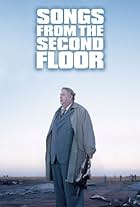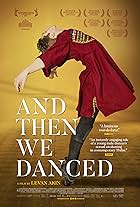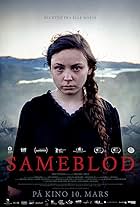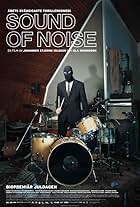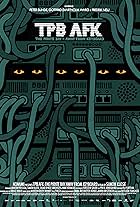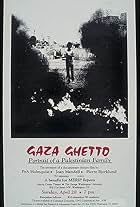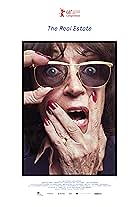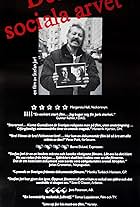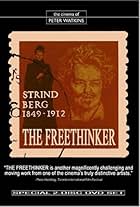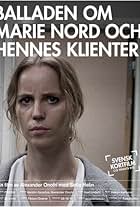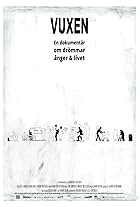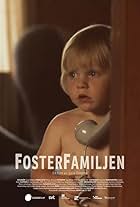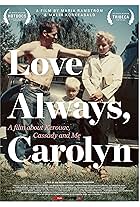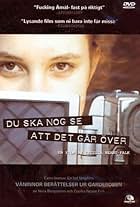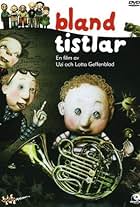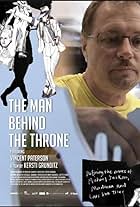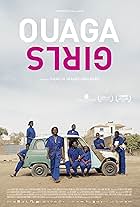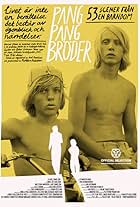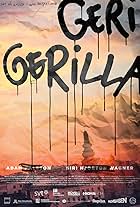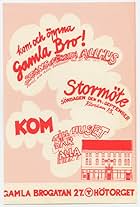Advanced search
- TITLES
- NAMES
- COLLABORATIONS
Search filters
Enter full date
to
or just enter yyyy, or yyyy-mm below
to
to
to
Exclude
Only includes titles with the selected topics
to
In minutes
to
1-50 of 50
- Where are we humans going? A film poem inspired by the Peruvian poet César Vallejo. We meet people in the city. People trying to communicate, searching compassion and get the connection of small and large things.
- A passionate coming-of-age tale set amidst the conservative confines of modern Tbilisi, the film follows Merab, a competitive dancer who is thrown off balance by the arrival of Irakli, a fellow male dancer with a rebellious streak.
- A reindeer-breeding Sámi girl who is exposed to the racism of the 1930's at her boarding school, starts dreaming of another life. But to achieve it, she has to become someone else and break all ties with her family and culture.
- A tone-deaf cop works to track down a group of guerilla percussionists whose anarchic public performances are terrorizing the city.
- An intellectual freedoms documentary based around the interpersonal triumphs, and defeats of the three main characters against the largest industry in the known universe. The media industry.
- A global look at the impact of military use of nuclear technology and people's perception of it.
- In the first documentary feature film made in Gaza, Gaza Ghetto highlights the historical precedents of war, dispossession and military control that influence a family's daily life in Jabalia Palestinian refugee camp. Intimate scenes --a child is born, a grandmother dies -- are inter-cut with visits to the architects of the Israeli military occupation. Ariel Sharon, Benyamin Beneliezar and soldiers on patrol candidly discuss their responsibilities.
- After a life of decadence and monthly allowances, sixty-eight-year-old Nojet inherits an apartment building in downtown Stockholm. However, the building turns on her and what appeared to be a cash cow is in fact a curse.
- This documentary is the third in a trilogy about a group of Swedish nonconformists. The first documentary was shot in 1967, and followed a bunch of rebellious youths around. These kids had nothing but contempt for those who fit into the society around them, and they were experimenting with drugs, and partying pretty heavily. In particular, it tells the stories of two young men, Kenta and Stoffe. Then, in 1979, the documentarian returns to cover the two men's lives, and the lives of their friends. What had been a friendly, cheerful bunch is now deeply involved in petty crime and drug use. Indeed, one of the two men followed in the earlier film (Stoffe) dies of a drug overdose during the filming of the documentary. The filmmaker returned in the early '90s, to see what has become of Stoffe's family, his friends, and Kenta and his family and friends. Stoffe's wife refused to meet with the filmmaker, but indicated that his son had been adopted, and has become a mechanic, living in the countryside. Kenta remained a "rebel," and remains proud of that fact, but his children studied hard and are on the verge of more conventional success.
- A 274-minute documentary portrait of the life of playwright August Strindberg. The topic of the movie is inextricable from its method of production: for two years, beginning in 1992, Watkins created the film in a communal collaboration.
- Marie is a social worker in an immigrant dense suburb. Outside her daily work she runs a youth center, leads courses and functions as parole officer for young Belem, who has served time in a correctional center. She also takes care of Belem's son, Ray, when Ray's mother is at work. Belem's release from prison coincides with the appearance of an irritatingly nosy economist from the social services head quarters, curious about Marie's impressing but costly work. As pressure mounts, Marie's true feelings rise to the surface and her methods and motives are questioned.
- All people are beautiful when they work. Respectfully, Jean Hermanson photographed workers, mainly of the Swedish engineering and industrial divisions, and the images later became part of our modern cultural heritage.
- The director Shahriyar Latifzadeh follows four elderly people in their daily lives. Can their life wisdom help him understand how life should be lived if we had all the wisdom at the age of 35?
- We follow director Julia's journey back in time, where she, together with her parents Ewa and Lennart and the foster child Patrik, recollect the shocking events that changed their lives over thirty years ago.
- In a dazzling sequence of shots Mikael Kristersson explores the greatness of the small objects in his own garden in Falsterbo, an old Swedish village. We see the real world from other perspectives and realize human beings are one species am
- Documentary about Carolyn Cassady, her life and marriage to Neal Cassady, her relationship with Jack Kerouac and how she takes care of the literary legacy from both.
- Three teenagers express their thoughts about bi- and homosexuality.
- Director Mia Engberg received a call from a man from the past, who tells her he spent several years in prison. She remembers Paris, a motorcycle, a cat, memories and things that got lost in the way.
- An animated, stop-motion film from Sweden, set during the summer at a music camp.
- Vincent Paterson is the one who told Michael Jackson to grab his crotch and who was called Satan by the Pope after directing the Blond Ambition Tour. He is an artist unknown to most people, but whose moves have been imitated in front of millions of mirrors. An educated and humble man who is the somewhat unexpected link between Madonna and Lars von Trier. A poor boy from Brookhaven, PA, who became a star choreographer in Hollywood. Director Kersti Grunditz - I met Vincent in 2001, read his bio and realized I had seen all his work, but never heard of him. After a good deal of persuasion he let me into his life and allowed me to make this intimate documentary.
- A group of young women from the outskirts of Ouagadougou, the capital of Burkina Faso, meet at the feminist education centre to study to become car mechanics. Ouaga Girls is a poetic coming-of-age story of sisterhood, life choices, and the strife of finding your own path.
- Gustav and Oskar are twins. Oskar has Achondroplasia, a common form of dwarfism. Both have blue eyes and blonde hair. They approach life in different ways. The director, Axel Danielson, have filmed Oskar and Gustav over a ten year period - from nine to nineteen - as they grow up together in an old farmhouse in the country-side, in the very South of Sweden. In 53 scenes in chronological order we follow the brothers through their journey of childhood, adolescence and struggle for identity.
- Lara is an aggressive feminist who meets Adam while shooting her documentary on feminism. Between those two we see a unique relationship form.
- 'It was a time when everything was possible - All power to the Imagination!' About the all- activity center Gamla Bro in Stockholm 1969-1972. The film tells of the difficulties that arose during general meetings and in the face of a rigid and controlling bureaucracy. The activists' passion and utopian-romantic ideology were gradually broken down as another reality asserted itself, while the house became filled with older alcoholics, homeless people and drug addicts.
